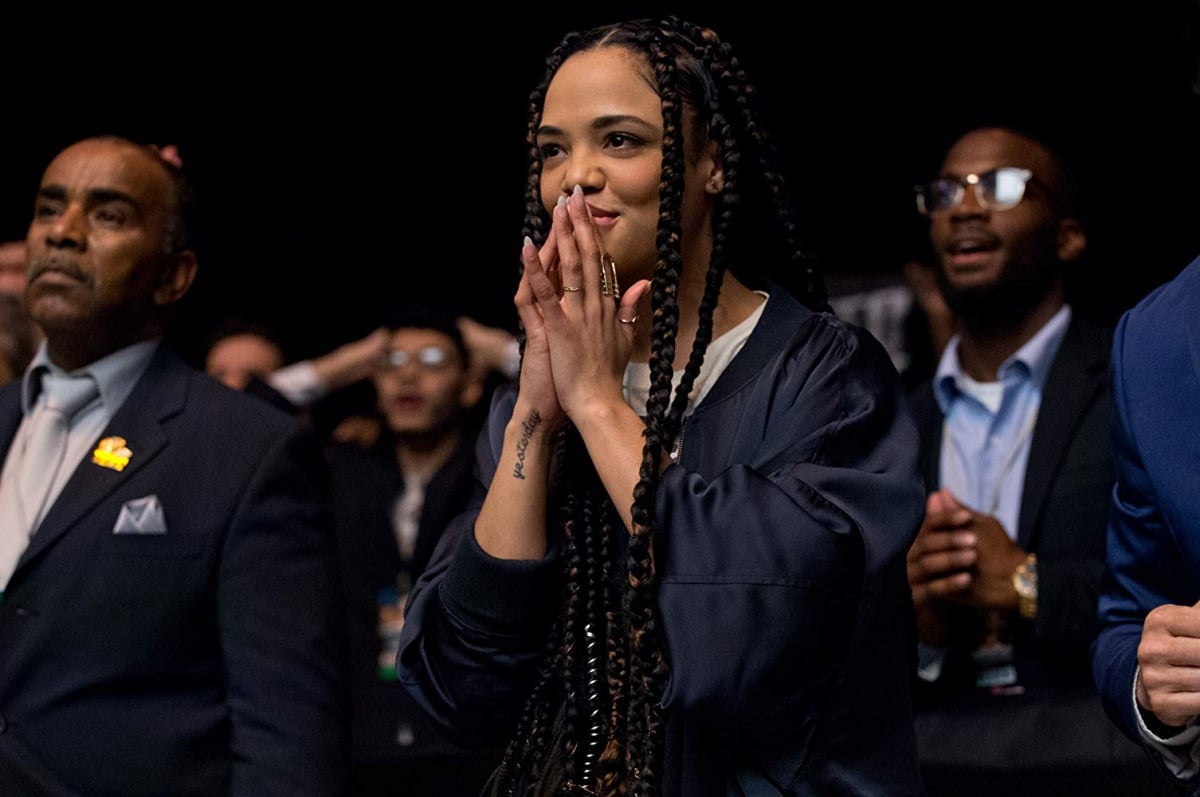Of the top 1200 grossing films from 2007 to 2018, only 4% were directed by women. That comes to 48 films total, which is a shockingly small amount. The statistic proves, beyond a shadow of a doubt, that women are shut out from important directing opportunities, and that they are not given the chance to direct bigger budget films. That has to change if we want to see a more inclusive Hollywood behind the scenes, but we need to change more than just the voices behind the cameras.
Once a film is out in wide release, are there any women or journalists of color reviewing it?
At Sundance, the Annenberg Inclusion Initiative created the 4% Challenge: challenging major celebrities and studios to work with a female director, especially female directors of color, in the next 18 months; actress and activist Tessa Thompson said she also pledged to double the number of journalists of color and female journalists she had covering her next films while speaking about the film. Universal became the first major studio to take the directorial pledge, followed by Amazon, and many celebrities have thrown their support behind the challenge, as well.
As more and more have come forward and taken the pledge, what remains to be seen is whether or not they will follow through. I’m sure detractors of the challenge will claim that this is hiring based on gender rather than talent, which misses the point, as per usual, but while we can talk about why it is important to have women behind the scenes of filmmaking until they actually drop a Star Wars title, I’m deeply interested in Thompson’s comments about journalists.
Film criticism is a majority white, male field. The Annenberg Inclusion Initiative did a study on critics and found there were 27 white male critics for every one female journalist of color. Actress and Time’s Up advocate Brie Larson spoke about this at the Crystal + Lucy awards, as reported by Vox, saying that audiences “are not allowed enough chances to read public discourse on these films by the people that the films were made for. I do not need a 40-year-old white dude to tell me what didn’t work for him about A Wrinkle in Time. It wasn’t made for him. I want to know what it meant to women of color, to biracial women, to teen women of color, to teens that are biracial.”
Larson later clarified her remarks in another Vox piece, saying: “What I am saying is that if you make a movie that is a love letter to women of color, there is an insanely low chance a woman of color will have the chance to see your movie and review your movie. We need to be conscious of our bias and make sure that everyone is in the room.”
There are so many talented critics of color and female critics out on the internet. However, because studios operate in a certain way, many of them don’t get the same opportunities white male critics working at the top trade publications do. Only certain voices being represented, and therefore only approaching a film from a certain perspective, will affect what is seen as high, award-worthy art and what is written off as a critical failure.
Journalists who aren’t just white men deserve the same chance to interview stars, review films, and be a part of the critical machine. It is vital to the continuation of criticism as an art form that we diversify the pool of talent, not just because more films are being made that should be reviewed by those they represent but because all art forms should be more inclusive. Critics bring invaluable insight to the experience of watching a film, and we need more than the same kind of voice reacting to art.
Support reviews from female critics, especially female critics of color. Share their reviews and interviews, and hire them and invite them to press events. Don’t only ask for their perspective on films that relate to their identity, but on all films. That is the best way to continue to advance film criticism and broaden it as a medium of expression.
(image: Barry Wetcher – © 2018 Metro-Goldwyn-Mayer Pictures Inc. and Warner Bros. Entertainment Inc)
Want more stories like this? Become a subscriber and support the site!
—The Mary Sue has a strict comment policy that forbids, but is not limited to, personal insults toward anyone, hate speech, and trolling.—









Published: Feb 5, 2019 04:24 pm